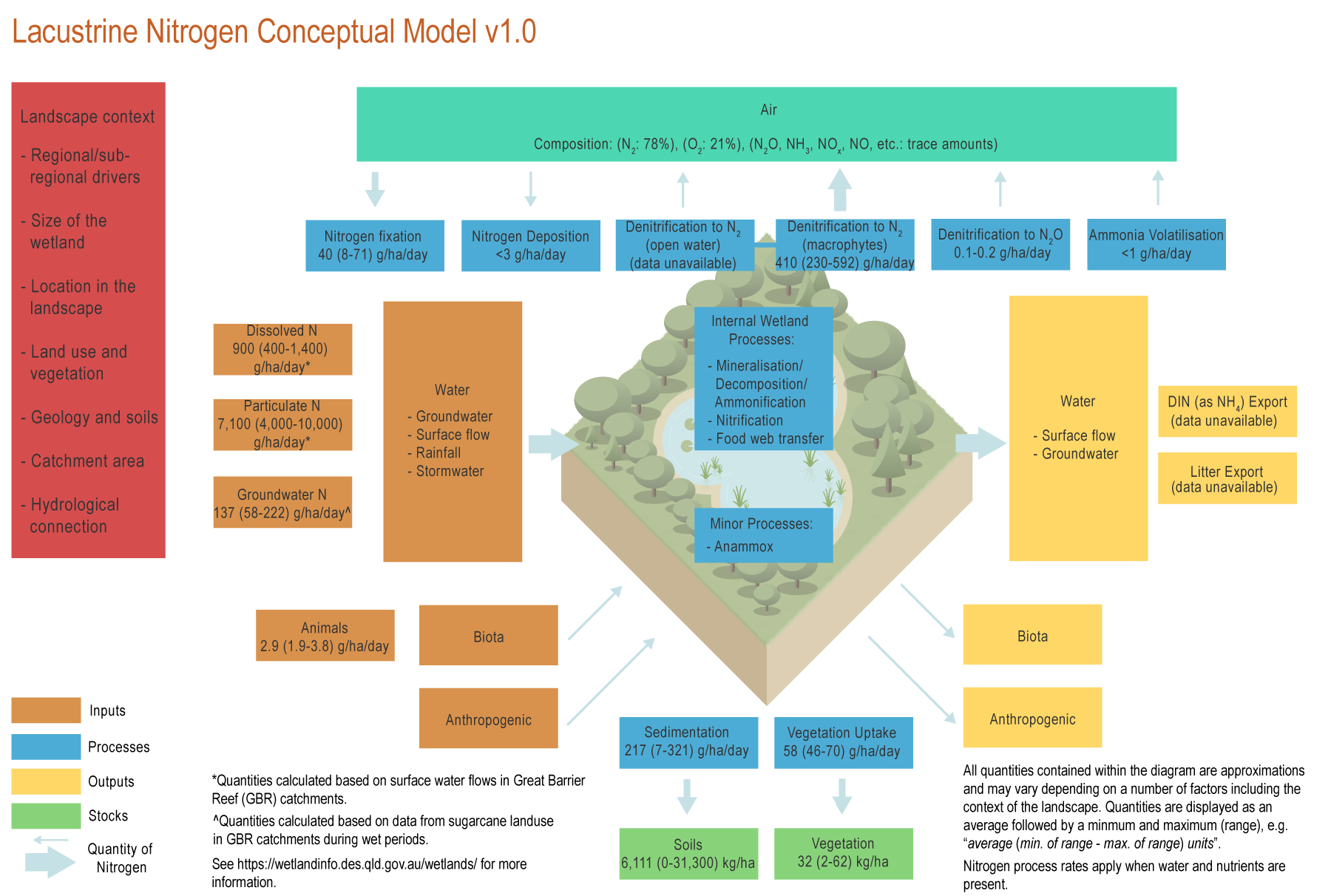|
|
LacustrineLacustrine – Inputs
The conceptual models were compiled by researchers in collaboration with a wide range of stakeholders from Natural Resource Management groups, universities and government agencies and based on available scientific information[2]. Click on elements of the model or select from the tabs below Inputs of nitrogen to lacustrine systems come from a variety of sources and depend on where the system is in the landscape. The general sources and inputs may be found in the pressure pages and are listed below. Some information relating specifically to lacustrine wetlands is listed on this page. GeneralLacustrine specificLacustrine wetlands in the Great Barrier Reef (GBR) catchments receive continuous supply of N, mostly through surface (dissolved inorganic nitrogen (900 (400-1400) g/ha/day))*[4][5] and groundwater flows (137 (58-222) g/ha/day)*[1]. High inputs are delivered during the wet season after floods, and continued lower inputs reach the wetlands through groundwater during the dry season[1], and to a lesser extent from nitrogen fixation and birds*[3][2]. *Nitrogen quantities may be displayed as an average followed by a minimum and maximum (range), e.g. “average (min. of range - max. of range)”. BiotaNitrogen inputs by animals are generally small (2.9 (1.9-3.8) g/ha/day)[2]. However, animal inputs, such as birds, could have a significant importance at local scale (e.g. tree swamps or shallow ponds especially in cleared or urban areas). References
Last updated: 9 August 2021 This page should be cited as: Department of Environment, Science and Innovation, Queensland (2021) Lacustrine – Inputs, WetlandInfo website, accessed 8 May 2025. Available at: https://wetlandinfo.des.qld.gov.au/wetlands/ecology/processes-systems/nitrogen-concept-model/lacustrine/inputs.html |

 — Department of the Environment, Tourism, Science and Innovation
— Department of the Environment, Tourism, Science and Innovation

